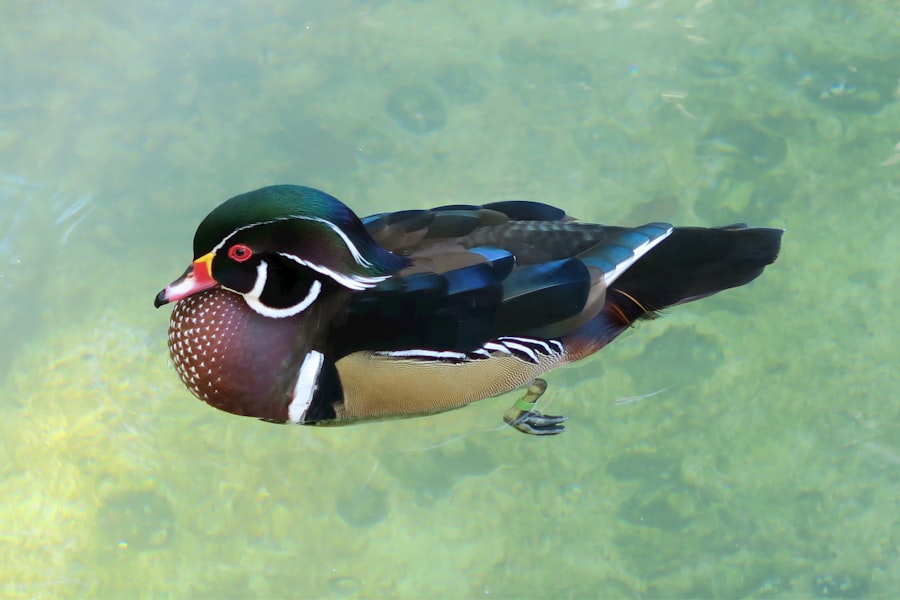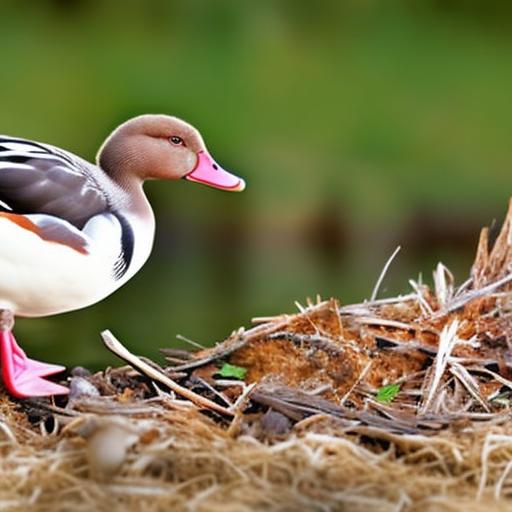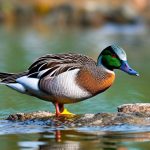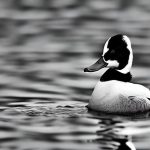Egg laying duck breeds are a popular choice for farmers and homesteaders due to their high egg production rates and low maintenance requirements. These breeds have been selectively bred over the years to maximize their egg-laying capabilities, making them an essential part of the agriculture and livestock industry. In this article, we will explore the benefits of raising egg laying duck breeds, the top 5 breeds for beginners, how to choose the right breed for your needs, the differences between domestic and wild breeds, the history and origin of popular breeds, ideal living conditions, care and maintenance, common health issues and diseases, and the economic value of these breeds.
Key Takeaways
- Egg laying duck breeds are a popular choice for backyard farming and small-scale agriculture.
- Raising egg laying duck breeds can provide a sustainable source of fresh eggs and meat.
- The top 5 egg laying duck breeds for beginners are the Khaki Campbell, Indian Runner, Welsh Harlequin, Buff, and Cayuga.
- When choosing an egg laying duck breed, consider factors such as egg production, temperament, and climate adaptability.
- Domestic egg laying duck breeds have been selectively bred for egg production, while wild egg laying duck breeds have adapted to survive in their natural habitats.
The Benefits of Raising Egg Laying Duck Breeds
One of the main benefits of raising egg laying duck breeds is their high egg production rate. Ducks are known for being prolific layers, with some breeds capable of producing up to 300 eggs per year. This makes them a valuable asset for farmers looking to generate a consistent source of income through egg sales. Additionally, duck eggs are highly nutritious and have a higher protein and fat content compared to chicken eggs. They are also rich in vitamins and minerals such as vitamin B12, vitamin A, iron, and selenium.
Another advantage of raising egg laying duck breeds is that they are relatively low maintenance and easy to care for. Ducks are hardy animals that can adapt well to different climates and living conditions. They require minimal shelter and can thrive in both free-range and confined environments. They are also excellent foragers and can find a significant portion of their diet from grazing on grass, insects, and other natural food sources. This reduces the need for expensive feed and lowers overall costs.
Furthermore, many egg laying duck breeds are considered dual-purpose, meaning they can be raised for both meat and eggs. This makes them a versatile option for farmers who want to maximize their resources. While the primary focus may be on egg production, the surplus males or older females can be processed for meat. Duck meat is known for its rich flavor and tender texture, making it a sought-after product in the culinary industry.
Top 5 Egg Laying Duck Breeds for Beginners
1. Khaki Campbell: The Khaki Campbell is a popular choice for beginners due to its high egg production rate and calm temperament. They are known to lay around 300 eggs per year and are excellent foragers. They have a khaki-colored plumage and are relatively small in size, making them easy to handle and care for.
2. Indian Runner: The Indian Runner is a unique breed known for its upright stance and distinctive running gait. They are prolific layers, with some individuals capable of laying up to 200 eggs per year. Indian Runners come in various colors, including white, fawn, and black, adding visual interest to any flock.
3. Welsh Harlequin: The Welsh Harlequin is a beautiful breed that originated in Wales. They are known for their striking plumage, which consists of silver or gold feathers with black spots. Welsh Harlequins are excellent layers, producing around 250 eggs per year. They are also known for their calm and friendly temperament.
4. Buff Orpington: The Buff Orpington is a dual-purpose breed that is highly regarded for its meat and egg production capabilities. They have a docile and friendly nature, making them suitable for families with children. Buff Orpingtons have a beautiful buff-colored plumage and lay around 200-220 eggs per year.
5. Pekin: The Pekin is one of the most popular duck breeds worldwide due to its large size, white plumage, and excellent meat quality. While they may not be the most prolific layers compared to other breeds on this list, they still produce a respectable number of eggs, averaging around 150-200 per year.
How to Choose the Right Egg Laying Duck Breed for Your Needs
When choosing the right egg laying duck breed for your needs, there are several factors to consider. First, you need to determine your purpose for raising ducks. If your main goal is egg production, then breeds like the Khaki Campbell or Indian Runner would be suitable choices. However, if you are also interested in meat production, then dual-purpose breeds like the Buff Orpington or Pekin would be more appropriate.
Climate and living conditions are also important considerations. Some duck breeds are more cold-hardy and can withstand harsh winters, while others may require additional protection or heat sources. Additionally, certain breeds may be better suited for free-range environments, while others can thrive in smaller spaces or confinement.
Personal preferences such as size, color, and temperament should also be taken into account. Some people may prefer smaller breeds that are easier to handle, while others may be drawn to larger breeds for their meat production potential. The color of the plumage can also vary greatly among different breeds, allowing for aesthetic choices. Lastly, some breeds may have more docile and friendly temperaments, which can be important if you plan on interacting with your ducks regularly.
The Differences Between Domestic and Wild Egg Laying Duck Breeds
Domestic egg laying duck breeds have been selectively bred over generations to maximize their egg production capabilities and adaptability to human care. As a result, they often have distinct physical characteristics and behaviors compared to their wild counterparts.
In terms of physical characteristics, domestic duck breeds tend to have larger bodies and heavier builds compared to wild ducks. This is because they have been bred for meat production as well as egg-laying capabilities. Domestic ducks also come in a wide range of colors and patterns, whereas wild ducks typically have more muted plumage for camouflage purposes.
Behaviorally, domestic ducks are generally more docile and less flighty compared to wild ducks. They have been raised in captivity and are accustomed to human interaction. Wild ducks, on the other hand, are more skittish and have a strong instinct for self-preservation. They are highly adapted to their natural habitats and have developed behaviors that allow them to survive in the wild.
In terms of egg production rate, domestic duck breeds have been selectively bred to lay a higher number of eggs per year compared to wild ducks. While wild ducks may lay a clutch of eggs once or twice a year, domestic breeds can lay eggs consistently throughout the year, especially with proper care and nutrition.
The History and Origin of Popular Egg Laying Duck Breeds

1. Khaki Campbell: The Khaki Campbell breed was developed in England by Mrs. Adele Campbell in the late 1800s. She crossed Mallards, Rouens, and Indian Runners to create a breed that excelled in both egg production and foraging abilities. The breed was named after Mrs. Campbell’s hometown of Khaki Campbell in Gloucestershire.
2. Indian Runner: The Indian Runner breed originated in the East Indies (now Indonesia) and was brought to Europe by Dutch traders in the 19th century. They were initially used as ornamental ducks due to their unique upright stance and running gait. Over time, they were recognized for their excellent egg-laying capabilities and became popular among farmers.
3. Welsh Harlequin: The Welsh Harlequin breed was developed by Leslie Bonnet in Wales during the mid-20th century. He crossed Khaki Campbells with Silver Appleyard ducks to create a breed that had the same excellent egg production rate as Khaki Campbells but with a more visually striking plumage.
4. Buff Orpington: The Buff Orpington breed was developed in England by William Cook in the late 1800s. Cook wanted to create a dual-purpose breed that was suitable for both meat and egg production. He crossed Rouen, Aylesbury, and Indian Runner ducks to create the Buff Orpington, which quickly gained popularity for its friendly nature and excellent meat quality.
5. Pekin: The Pekin breed, also known as the American Pekin, originated in China and was brought to the United States in the mid-19th century. They were initially used as ornamental ducks but quickly gained popularity for their meat production capabilities. Pekins have a large size and white plumage, making them easily recognizable.
The Ideal Living Conditions for Egg Laying Duck Breeds
To ensure the health and well-being of egg laying duck breeds, it is important to provide them with the ideal living conditions. Here are some key factors to consider:
1. Space requirements: Ducks require ample space to roam and forage. For free-range ducks, a minimum of 10 square feet per duck is recommended. If you are keeping ducks in a confined area, such as a coop or pen, allow at least 4 square feet per duck.
2. Water source and quality: Ducks need access to clean water for drinking, bathing, and preening. A shallow pool or pond is ideal for ducks to swim and engage in natural behaviors. Ensure that the water is changed regularly to maintain cleanliness and prevent the spread of diseases.
3. Shelter and bedding: Ducks require shelter to protect them from extreme weather conditions and predators. A well-ventilated coop or shed with straw or wood shavings bedding is suitable for ducks. The bedding should be changed regularly to maintain cleanliness and prevent the buildup of ammonia.
4. Feeding and nutrition: Ducks require a balanced diet that includes a combination of commercial feed, fresh greens, insects, and grit. Provide a constant supply of fresh water and ensure that the feed is appropriate for their age and purpose (egg production or meat production).
How to Care for and Maintain Egg Laying Duck Breeds
Caring for and maintaining egg laying duck breeds requires a daily routine and attention to their specific needs. Here are some key aspects to consider:
1. Daily care routine: Ducks should be checked on daily to ensure they have access to clean water, fresh food, and a clean living environment. Their water should be changed regularly, and any soiled bedding should be removed. Ducks should also be observed for any signs of illness or injury.
2. Grooming and hygiene: Ducks are generally clean animals, but they may require occasional grooming. This includes trimming their nails, cleaning their beaks, and checking for any matted feathers or parasites. Regular grooming helps prevent health issues and ensures the ducks are comfortable.
3. Health monitoring: Regular health checks are essential to detect any signs of illness or disease early on. Look out for symptoms such as lethargy, loss of appetite, abnormal droppings, respiratory issues, or changes in behavior. If any concerns arise, consult a veterinarian with experience in poultry health.
4. Egg collection and storage: Eggs should be collected daily to prevent them from being soiled or damaged. Store the eggs in a cool and dry place with good ventilation. Avoid washing the eggs unless necessary, as this can remove the protective bloom on the shell.
Common Health Issues and Diseases in Egg Laying Duck Breeds
While egg laying duck breeds are generally hardy animals, they can still be susceptible to certain health issues and diseases. Here are some common problems to watch out for:
1. Respiratory infections: Ducks can develop respiratory infections due to poor ventilation, damp bedding, or exposure to cold drafts. Symptoms may include coughing, sneezing, nasal discharge, and difficulty breathing. Good hygiene practices and proper ventilation can help prevent respiratory infections.
2. Parasites: Ducks can be affected by external parasites such as mites, lice, and ticks. These parasites can cause irritation, feather loss, and anemia. Regular inspections and appropriate treatments can help control parasite infestations.
3. Nutritional deficiencies: Ducks require a balanced diet to maintain optimal health. Nutritional deficiencies can lead to issues such as poor egg production, weak eggshells, or stunted growth. Ensure that ducks have access to a high-quality feed and provide supplements if necessary.
4. Egg-related problems: Egg laying duck breeds may experience issues such as egg binding (when an egg gets stuck in the reproductive tract), soft-shelled eggs, or prolapse (when the oviduct protrudes from the vent). These conditions require immediate veterinary attention to prevent further complications.
The Economic Value of Egg Laying Duck Breeds in Agriculture and Livestock Industry
Egg laying duck breeds have significant economic value in the agriculture and livestock industry. Here are some ways in which they contribute:
1. Egg production and sales: Egg laying duck breeds are valued for their high egg production rates, which provide a consistent source of income for farmers. The eggs can be sold directly to consumers, restaurants, or used for value-added products such as baked goods or pickled eggs.
2. Meat production and sales: While the primary focus may be on egg production, surplus males or older females can be processed for meat. Duck meat is highly sought after for its rich flavor and tender texture, making it a valuable product in the culinary industry.
3. Fertilizer and pest control: Duck manure is an excellent source of organic fertilizer that can be used to improve soil fertility and crop yields. Additionally, ducks are natural foragers and can help control pests such as slugs, snails, and insects in agricultural settings.
4. Ecological benefits: Ducks play a role in maintaining ecological balance by contributing to wetland ecosystems and biodiversity. They help disperse seeds, control aquatic vegetation, and provide food for predators such as foxes and birds of prey.
Egg laying duck breeds are a valuable asset in the agriculture and livestock industry due to their high egg production rates, low maintenance requirements, and dual-purpose capabilities. They provide nutritious eggs, require minimal care, and can be raised for both meat and eggs. By choosing the right breed, providing ideal living conditions, and implementing proper care and maintenance practices, farmers and homesteaders can benefit from the economic value of these breeds. Whether you are a beginner or an experienced farmer, raising egg laying duck breeds can be a rewarding endeavor that adds diversity to your farm and provides a sustainable source of income.
For further information and support on raising egg laying duck breeds, resources such as books, online forums, and local agricultural extension offices can provide valuable guidance.
If you’re interested in egg-laying duck breeds, you might also want to check out this informative article on the incubation period for goose eggs. Understanding the incubation process is crucial for successful breeding and hatching. To learn more about it, click here: https://poultrywizard.com/breeding-geese/what-is-the-incubation-period-for-goose-eggs/. Additionally, if you’re looking for ideas on creating a large chicken coop, this article provides some great inspiration: https://poultrywizard.com/keeping-chickens/large-chicken-coop-ideas/. And if you’re feeling a bit more adventurous, you might even want to explore the unique design of the Hannah Montana chicken coop: https://poultrywizard.com/keeping-chickens/hannah-montana-chicken-coop/. Happy reading and happy poultry keeping!
FAQs
What are egg laying duck breeds?
Egg laying duck breeds are domesticated ducks that are specifically bred for their ability to lay a large number of eggs.
What are some common egg laying duck breeds?
Some common egg laying duck breeds include the Khaki Campbell, Indian Runner, Welsh Harlequin, and the Buff Orpington.
How many eggs can egg laying duck breeds lay?
Egg laying duck breeds can lay anywhere from 150 to 300 eggs per year, depending on the breed and individual duck.
What is the average size of eggs laid by egg laying duck breeds?
The average size of eggs laid by egg laying duck breeds is larger than chicken eggs, typically weighing between 2.5 and 3.5 ounces.
What is the lifespan of egg laying duck breeds?
The lifespan of egg laying duck breeds can vary depending on the breed and living conditions, but on average they can live up to 10 years.
What is the best way to care for egg laying duck breeds?
Egg laying duck breeds require a clean and safe living environment, access to fresh water and food, and regular veterinary care. They also need a balanced diet that includes a source of calcium to support egg production.
Meet Walter, the feathered-friend fanatic of Florida! Nestled in the sunshine state, Walter struts through life with his feathered companions, clucking his way to happiness. With a coop that’s fancier than a five-star hotel, he’s the Don Juan of the chicken world. When he’s not teaching his hens to do the cha-cha, you’ll find him in a heated debate with his prized rooster, Sir Clucks-a-Lot. Walter’s poultry passion is no yolk; he’s the sunny-side-up guy you never knew you needed in your flock of friends!







